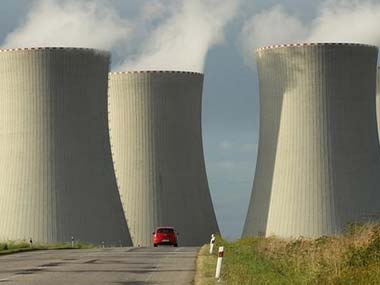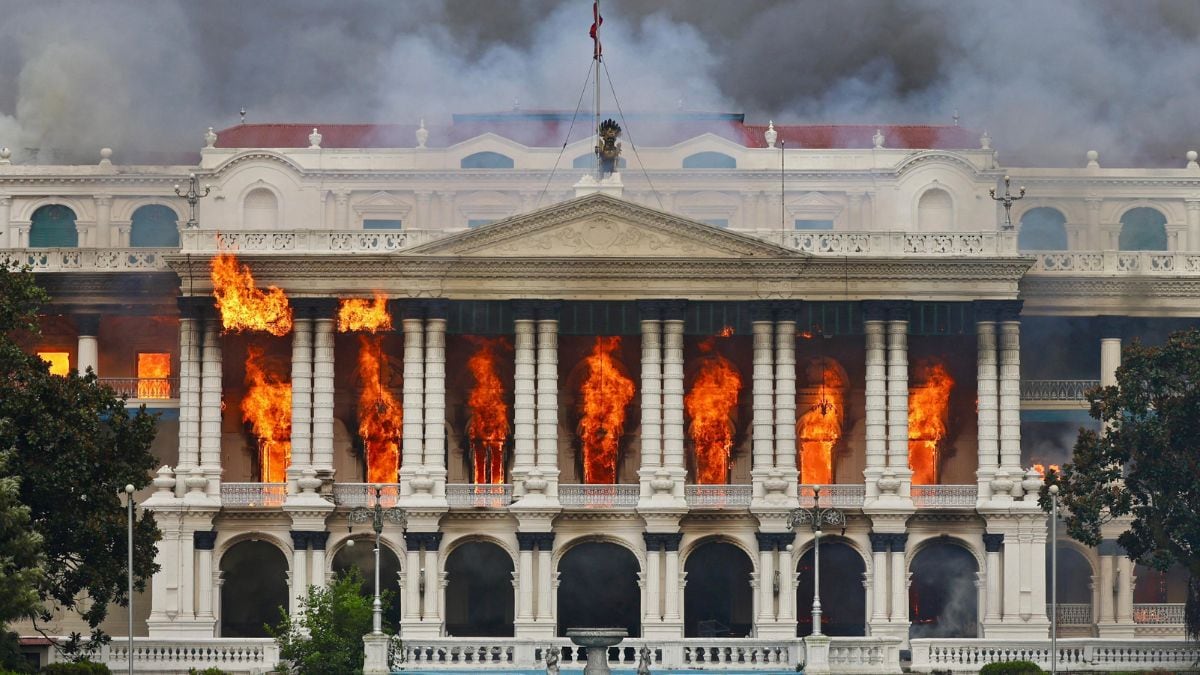By Jaideep A Prabhu India and the world’s nuclear fuel suppliers have not seen eye-to-eye recently on the issue of nuclear tracking. The suppliers, particularly Australia, Canada, and the United States, have been rebuffed by India on their demand to monitor the passage of the nuclear fuel they sell to us. The issue came up during President Barack Obama’s visit to India for the Republic Day celebrations and has been debated in the Australian parliament in recent months. India’s hesitation to share the data is being read as an attempt to wriggle out of its non-proliferation commitments — without such monitoring, experts say, it is possible for uranium meant for civilian purposes to end up in India’s nuclear weapons programme. India’s position is that all imported nuclear material is subject to safeguards under the guidelines of the International Atomic Energy Agency and further bilateral intrusions are unnecessary. After Canada and the United States gave up their tracking demands, the last battlefield in this debate has shifted to Australia. [caption id=“attachment_2181263” align=“alignleft” width=“380”]  Representational image. Getty Images[/caption] There has been a lot of opposition to what some consider the diluted standards of nuclear safeguards between Australia and India, and to nuclear energy in general. This has been voiced in the Australian parliament over the past few months. The key is, however, to understand the implications of additional nuclear safeguards demanded by critics in the form of nuclear tracking; there is little point in countering (again) the tired old arguments of the anti-nuclear crowd, and some of the criticism of India’s nuclear programme is plain calumny. For instance, it is alleged that India’s nuclear behaviour has been problematic in the past: India tested nuclear weapons in 1974 under the pretext of peaceful nuclear explosions. This was done by diverting nuclear material intended for civilian use, and India allegedly obtained centrifuge designs from Pakistan’s infamous AQ Khan network. For these reasons, it is argued, India must sign the Non-Proliferation Treaty, the Fissile Material Cut-Off Treaty, and the Comprehensive Test Ban Treaty before any serious nuclear deal is considered. The only thing missing from this list is world peace and Markandeya’s eternal youth. To cut to the matter at hand, objections have been raised because Canberra’s administrative agreement with Delhi differs in a few small, but important, ways from the 23 other treaties Canberra has entered into with 41 countries, including the United States. One concern is the status of the Australia-Obligated Nuclear Material (AONM), which is legalese for nuclear material supplied by Australia. According to Australian law, the Australian Safeguards and Non-Proliferation Office (ASNO) is obligated under its Safeguards Act, Section 51(2), to prepare annual reports accounting for all nuclear material supplied by Australia to its various partners in terms of location, quantities and intended use. This means that Australian uranium would have to be tagged and its passage through a nuclear fuel cycle recorded at every stage. If India refuses to share such information, the ASNO would not be able to fulfil its obligations to Canberra’s lawmakers. From an Indian perspective, any information shared must serve a purpose. Canberra wishes to maintain close tabs on its nuclear material to ensure that its non-proliferation responsibilities are met. If this can be guaranteed without the submission of extra information, there should be no need to submit such minute details about how India uses its imported nuclear material. To this end, India has entered into an agreement with the International Atomic Energy Agency (IAEA) that puts 14 of its 20 reactors under international safeguards. The details of the analysis and reports produced by IAEA remain classified but may be shared with other countries if permitted by Delhi. Even if these reports are not shared by Delhi with Australia or its other partners in nuclear commerce, the IAEA will nevertheless flag any violation of safeguards. This meets confidentiality requirements as well as verification needs. As long as the IAEA gives assurances that India is not making unauthorised use of any imported nuclear material, it should not matter to ASNO whether AONM in particular has been used exclusively for civilian purposes. It should also be noted that Australia’s treaties with Russia and China do contain specific language that obligates the recipient state to share information, but this involves only the overall conclusions which the IAEA has drawn from administering safeguards. The agreement with India does not diverge significantly from this. The problem with these broad IAEA assurances, critics argue, is that bilateral treaty agreements may supersede international obligations. Australia’s nuclear commerce treaties are usually stricter than international safeguards norms. However, Canberra’s understanding with Delhi is more flexible than its agreements with other states. Some in Australia argue that if India wishes to be treated on a par with other members of the nuclear club, it should accede to the same standards of scrutiny as the others; furthermore, Australian safeguards standards should not be lowered in a moment of commercial weakness to cater to the lucrative Indian market. Given India’s labyrinthine bureaucracy and governmental opacity, it is not clear whether any benefits of Australian understanding would be reciprocated in a timely manner. The fears over the discrepancies between treaties is mostly exaggerated. For example, one fear is that the IAEA safeguards allow India to substitute safeguarded weapons-grade fissile material for unsafeguarded reactor-grade material (Art. 30(d)). A closer reading of the clause will show, however, that any substitution must be done with the permission of the IAEA and that the weight of the substituted material must match that of the material to be substituted in weight of fissionable isotopes as well as the ratio of fissionable isotopes to total mass. As per IAEA definitions (Art. 20 of the IAEA Statute), this means plutonium 239, uranium 233, and uranium 235. Thus, the fear that uranium 235 can be substituted for uranium 238 is unfounded. A second concern is that the IAEA allows India to use safeguarded material in unsafeguarded facilities. While this is true, it poses little risk of proliferation for any facility that accepts safeguarded material comes under safeguards itself. Furthermore, depending upon the amount of material involved, India will have to submit the facility to inspections. One assumes that Delhi will not take kindly to any inspection of its military facilities and so will not transfer safeguarded material to such facilities. It is also alleged that India can use safeguarded fuel in a blend with unsafeguarded material. Again, this conveniently ignores context - India is allowed to do so only as long as (a) the safeguarded material is 30 percent or less than the total fuel, and (b) the ratio of the fissionable isotope to the total mass does not increase. If it does, then the whole blend comes under safeguards. Similarly, any nuclear material exempt from safeguards under Art. 25 has strict conditions on proportion if it is to go unsafeguarded. India will not, therefore, be able to spirit away any imported nuclear fuel for its weapons programme. Concern has been expressed over the increased flexibility Canberra has shown India which it does not extend to other states - even close allies. One issue is that India has been given a pre-emptive right to reprocess fuel whereas other states may do so only with permission from Australia. Again, this is broadly true, but one aspect overlooked is that any such reprocessing is subject to IAEA safeguards as well as the modalities of India’s agreement with the United States. What makes India stand out in terms of reprocessing is that it is one of the few countries still interested in a closed nuclear fuel cycle. Reprocessing would be as routine in an Indian programme as enrichment is in the American one. For such a regular activity, it makes sense to give a one-time, pre-emptive permission under safeguards than at regular and frequent intervals. Opponents of India-Australia nuclear commerce also worry that there are no fallback safeguards in the agreement between the two countries. If, for some reason, the IAEA cannot maintain safeguards over India’s imported nuclear material, Australian nuclear material would be in India without any non-proliferation cover. This is not quite correct: the India-Australia Agreement on Cooperation in the Peaceful Uses of Nuclear Energy is not dependent upon the IAEA safeguards being operational. While the agreement refers to some of the stipulations of India’s treaties with the IAEA and the United States as applicable to India-Australia nuclear trade, there is no suggestion that these rules apply only as long as those treaties are in force. In fact, Art. XIV ensures that even if the India-Australia agreement were to terminate, the safeguards provisions of the treaty would still hold. Complaints that the India-Australia agreement does not contain any explicit right of return in case of termination have also been made. This, however, is merely a technicality and not a non-proliferation weak link. If India is in violation of the safeguards norms, there will be international attention on Delhi. The terms of the agreement between the two Indian Ocean Rim countries prohibits India from using Australian nuclear fuel in an unsafeguarded manner under any circumstances and repeatedly violating the terms of the non-proliferation agreement could lead to the matter being raised in international fora that are important for India’s development. A right of return is a fairly standard clause in nuclear contracts but India has made its opposition to the idea known in all its negotiations. In the India-US agreement as well, Washington’s right to demand the return of its nuclear material is not absolute but tempered by four considerations Delhi has placed…including a year before the right could be exercised. India’s fear is that its partners may unilaterally terminate their agreements with India and leave the country in a fuel crunch. Any demand for return must allow for the Indian nuclear fuel stockpile to be compensated with material from other sources before the fuel from the offended country is returned. Finally, the lack of any mechanism for dispute resolution is flagged as worrisome, particularly in conjunction with all the other objections raised. Australia usually includes arbitration mechanisms within its treaties with other states but that in itself is of little value except, perhaps, some clarity. It would be a safe guess that were any dispute to arise between Delhi and Canberra, the representatives of each country would sit down to discuss the situation. The representation would include nuclear lawyers, engineers and bureaucrats. The omission of this commonsensical procedure hardly raises the risk of nuclear proliferation. Additionally, to state the obvious, the Vienna Convention on the Law of Treaties allows either party to suspend its treaty obligations at any time if it is felt that the other side is in material breach of the terms and conditions. India is a special country, of that there is no doubt: it is a nuclear weapons state that stands outside the NPT and has yet made inroads into international nuclear commerce. Making demands of Delhi that ignore this Trishanku-esque reality is futile. The attempt to hold India to standards it has not accepted by trying to interpret non-proliferation norms as common law, especially when the Nuclear Five violate the spirit of the NPT with abandon, will only be met with disappointment. The Canadians and the Americans eventually dropped their demands for nuclear tracking because they realised this (and probably also because the use of nuclear fuel can be modelled by intimate knowledge of the reactor). Canberra cannot allow non-proliferation lobbyists to hold hostage the environment and the development of over a billion people over a fabricated issue.
The nuclear fuel supply agreement with Australia is proving to be tougher than the ones with the US. This is because the Australian law on non-proliferation is stronger, in some respects, than those of the authors
Advertisement
End of Article
Written by FP Archives
see more


)

)
)
)
)
)
)
)
)



